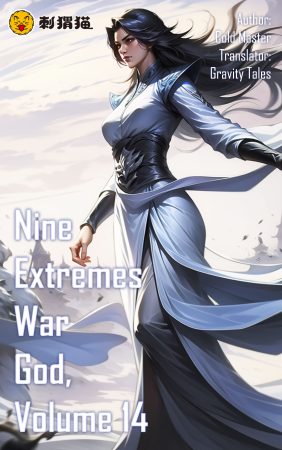Chapter 128: The Assassination
Our Discord Server: https://discord.gg/PazjBDkTmW
You can buy coins here to unlock advanced chapters: https://gravitytales.com/coins-purchase-page/
Advanced chapter until 300+ at patreon.com/caleredhair
Speaking of Kirov, many people will be familiar with him. His full name was Sergei Mironovich Kirov. However, I must still give a brief introduction to this elite of the red regime.
As early as October 1917, he was elected as a delegate to the Second All-Russian Congress of Soviets and participated in the October armed uprising in Petrograd. After the victory of the October Revolution, the Party Central Committee sent him back to the Caucasus to lead the struggle to establish and consolidate Soviet power in the Terek region and other areas of the North Caucasus.
In February 1919, he was appointed to lead the defense of the city of Astrakhan and the Astrakhan frontier region, successively serving as chairman of the region’s provisional revolutionary military committee, a member of the revolutionary military council of the Red Army’s Independent 11th Army, and a member of the revolutionary military council of the Southern Army Group. During this period, he also actively led the party’s underground work in the North Caucasus region and the guerrilla war against Denikin.
In May 1920, he began to serve as the plenipotentiary representative of the Russian Soviet Federative Socialist Republic to the Menshevik government of Georgia. In the same year, he was ordered to lead the Soviet Russian delegation to sign a peace treaty with Poland in Riga. After returning to the North Caucasus in mid-October, he was elected a member of the North Caucasus Bureau of the Central Committee of the Russian Communist Party.
In March 1921, he was elected as a candidate member of the Central Committee at the Tenth Congress of the Russian Communist Party. In July of the same year, he was elected secretary of the Central Committee of the Azerbaijan Communist Party. Kirov was one of the founders of the Transcaucasian Socialist Federative Soviet Republic. Through his and Ordzhonikidze’s joint efforts, in 1922, the republics of Azerbaijan, Armenia, and Georgia united to form the Transcaucasian Socialist Federative Soviet Republic and passed a resolution to join the Union of Soviet Socialist Republics.
In 1923, he was elected a full member of the Central Committee at the Twelfth Congress of the Russian Communist Party. In December 1925, he was transferred to work in Leningrad. In February 1926, at the 23rd Special Conference of the party held in Leningrad province, he was elected First Secretary of the Leningrad Provincial Committee of the All-Union Communist Party, concurrently serving as the First Secretary of the Northwest Bureau of the Central Committee, and a candidate member of the Politburo of the Central Committee. From 1930 onwards, he was a full member of the Politburo of the Central Committee.
However, such a smooth career was not entirely a good thing. At the Seventeenth Congress of the Soviet Union, Kirov won the support of a large number of people, which made Stalin, who had always regarded Kirov as his successor, feel a sense of crisis.
Power creates an insatiable appetite. In fact, at this time, Kirov also felt that he no longer needed to be subordinate to anyone, and during the Seventeenth Congress, he openly stood up to challenge Stalin, who had been both his mentor and his friend.
On December 1, 1934, at around 4:30 in the afternoon, Kirov entered the Smolny Institute, the provincial committee office building, as scheduled and went up the main staircase to the third floor. Just as Kirov turned from the main corridor into the left corridor to head toward his office, he was shot in the back of the head and fell to the ground. Staff and guards who rushed out upon hearing the sound captured the somewhat neurotic Nikolaev, holding a revolver, next to Kirov’s body. Fifteen minutes later, as doctors carried Kirov into his office for a futile resuscitation attempt, Nikolaev’s wife, Milda, was also taken into custody.
After his capture, Nikolaev was immediately subjected to an intense interrogation, but at the time, he had lost emotional control. It wasn’t until his second interrogation at 9:00 that night that he gave a more logical, albeit halting, account.
This incident was full of bizarre and mysterious elements. First, this Nikolaev, who was judged to be a bit neurotic, had possessed the revolver he used for the crime as early as 1918. In 1924, he had even obtained a corresponding gun license from the Soviet government, which he successfully renewed six years later in April 1930.
And this dangerous individual, who was licensed to carry a gun, was arrested on two separate occasions for tailing Kirov, an important Soviet leader. The revolver was found on his person both times. What was even more incredible was that he was released without charge on both occasions…
Another strange incident was that the key witness, the guard Borisov, was being transported in an ordinary truck, which was involved in a car accident en route. The truck driver later recounted what happened to the Presidium of the Central Committee at the 20th Party Congress: as the truck was moving, an NKVD officer sitting next to the driver grabbed the steering wheel, drove the truck over the sidewalk, and crashed it straight into a wall. After the truck hit the wall and stopped, no one was injured, except that the truck’s right front headlight was broken. Strangely, Borisov died on the spot. The doctor’s certificate stated that he died in a car accident. Later, Borisov’s wife was also killed. The driver was sent to a concentration camp.
And this guard, Borisov, was the person in charge of Kirov’s security. Coincidentally, at the time of Kirov’s murder, this guard, who should not have left his side for a moment, was a good twenty paces away from the man he was supposed to protect. And during Kirov’s assassination, this guard made no remedial actions.
All the parties involved were eliminated within two days. Subsequently, Stalin convened an internal meeting of his personal faction. Not many people attended, among them were Stalin’s confidant Khrushchev, and another of Stalin’s loyalists named Yezhov.
“Yezhov! Comrade Kirov has been assassinated! This is a loss for our entire Soviet Union!” Stalin said to his subordinate as soon as they met, feigning extreme grief. “We must find the killer immediately! And the mastermind behind him! Look for the killer among the Zinovievites!”
However, Yezhov clearly heard Khrushchev whisper to Stalin, “Everything is taken care of. There are no survivors.”
Subsequently, Stalin picked up a pen and wrote “Moscow Center” and “Leningrad Center” on two separate sheets of white paper. He then listed Zinoviev, Kamenev, and others under “Moscow Center,” and the arrested Komsomol cadres under “Leningrad Center.”
He then handed these two sheets of paper to Yezhov. “Arrest the culprits according to the names on this! They are all murderers who conspired to destroy the country!” Thus, this list, written by Stalin’s own hand, became the evidence in the Kirov assassination case.
Kirov’s body was quickly transported to Moscow. On December 6, 1934, under the watchful eyes of the public, Stalin personally presided over a grand funeral for him and served as one of his pallbearers. Mikoyan wrote in his memoirs: “The death of Kirov was the most painful event for the party and the state after the death of Lenin, a grief that even surpassed the grief at the time of Dzerzhinsky’s death.”
On December 22, 1934, the Soviet government issued a notice on the investigation of the Kirov case, stating that the assassin Nikolaev was a member of an underground terrorist organization called the “Leningrad Center,” which was composed of members of the Zinoviev opposition. Due to insufficient evidence, Zinoviev and Kamenev were handed over to the People’s Commissariat for Internal Affairs for further investigation.
On December 29, 1934, without any valid evidence or documents, Nikolaev and his 13 so-called accomplices from the “Leningrad Center” were executed. Before this, 103 former White Guards had already been suppressed.
A little over two months later, Nikolaev’s wife, Milda, who had already been expelled from the party for “lack of vigilance,” was also shot on March 10, 1935. In addition to Milda herself, her sister and brother-in-law were also suppressed at the same time. Furthermore, Nikolaev’s brother, Pyotr Nikolaev, and Milda’s brother, Pyotr Draule, were also arrested one after another. Nikolaev’s two sisters and cousin were also sent to concentration camps, while his mother was exiled to a remote rural area.
On December 16, 1934, Stalin ordered the arrest of Zinoviev and Kamenev. Both were old Bolsheviks who had joined the party in 1901 and were members of the party’s Central Politburo from 1919 to 1926. Zinoviev had served as Chairman of the Leningrad Soviet and Chairman of the Executive Committee of the Comintern. Kamenev had served as Chairman of the Moscow Soviet, First Deputy Chairman of the Council of People’s Commissars of the USSR, and Chairman of the Council of Labor and Defense. These two men had formed a triumvirate with Stalin in Lenin’s later years, helping Stalin survive the crisis of Lenin’s Testament and getting rid of Stalin’s biggest rival, Trotsky.
It was these two men, who should have been Stalin’s right and left hands, who ultimately broke with Stalin because they constantly challenged his authority within the party and had vaguely become the spiritual leaders of the various factions opposing him. So this time, Stalin decided to start with these two.
On January 15, 1935, the Soviet Union held a secret trial for Zinoviev, Kamenev, and 17 other opposition members, accusing them of forming and joining a secret organization, the “Moscow Center,” engaging in anti-Soviet secret activities, and attempting to replace the current leadership.
Both men resolutely denied the existence of such an organization, denied any connection to the Kirov assassination, and condemned the act of terrorism in court. However, under high pressure, they were forced to admit that their past anti-Stalin activities might have objectively encouraged the currently existing terrorist tendencies and contributed to the criminals’ downfall. Therefore, they bore indirect moral responsibility for the assassin Nikolaev.
Although the prosecution could not produce any material evidence to prove their crimes, Zinoviev was still sentenced to 10 years in prison, and Kamenev to 5 years. In the end, neither man could escape death. They were secretly executed in prison by Yezhov.
Not everyone remained silent on this matter, nor was everyone foolish enough to believe the results of the Kirov case investigation. Many of the older generation of Soviet revolutionary leaders were skeptical about it. Among them was Marshal Tukhachevsky, who was already the commander of a Soviet front.
This military leader, who had just been promoted to Marshal, ran around trying to find the murderer of his comrade. Unfortunately, no one was willing to help him, and his actions gradually angered Stalin, who already wanted to firmly control the military.












